from 0 review
6 nights 7 days
Specific Tour
Unlimited
___
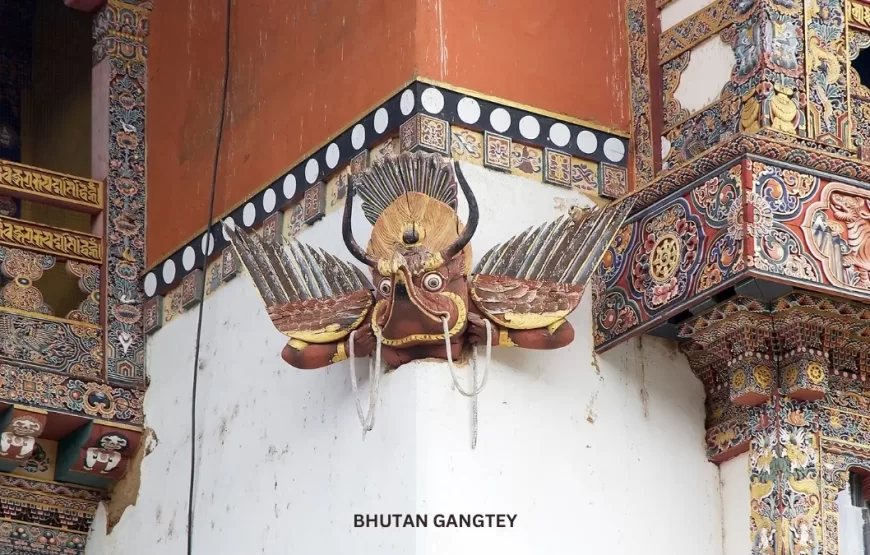
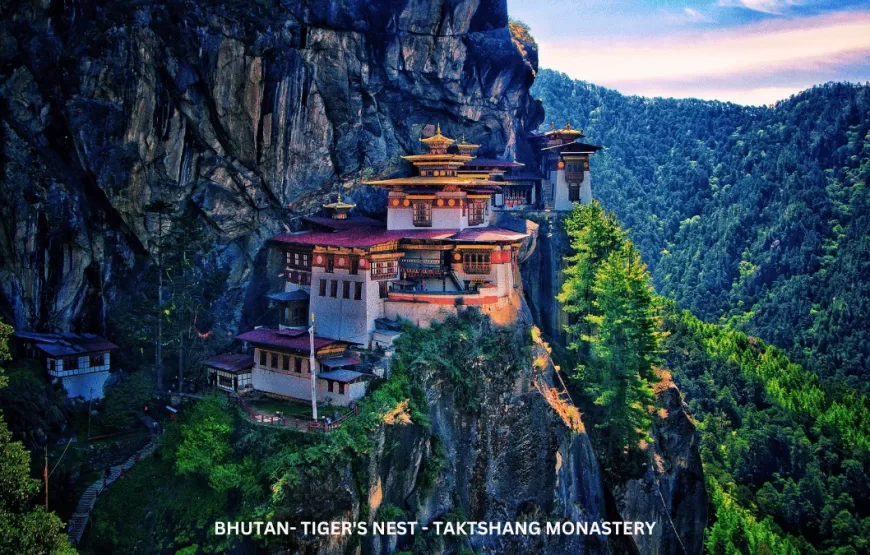
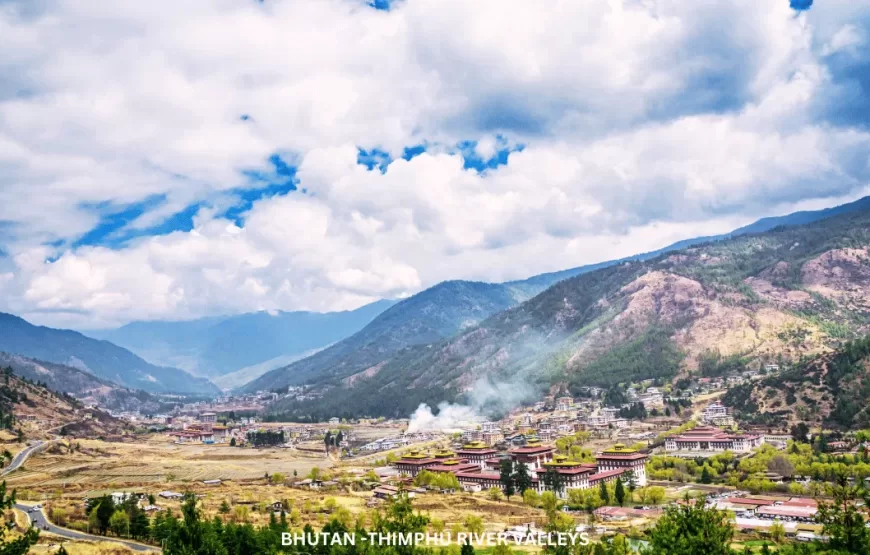
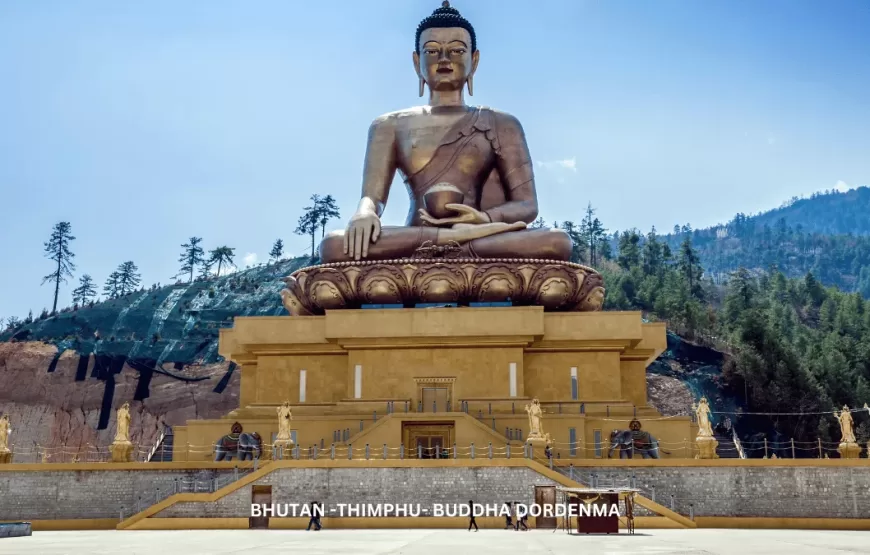
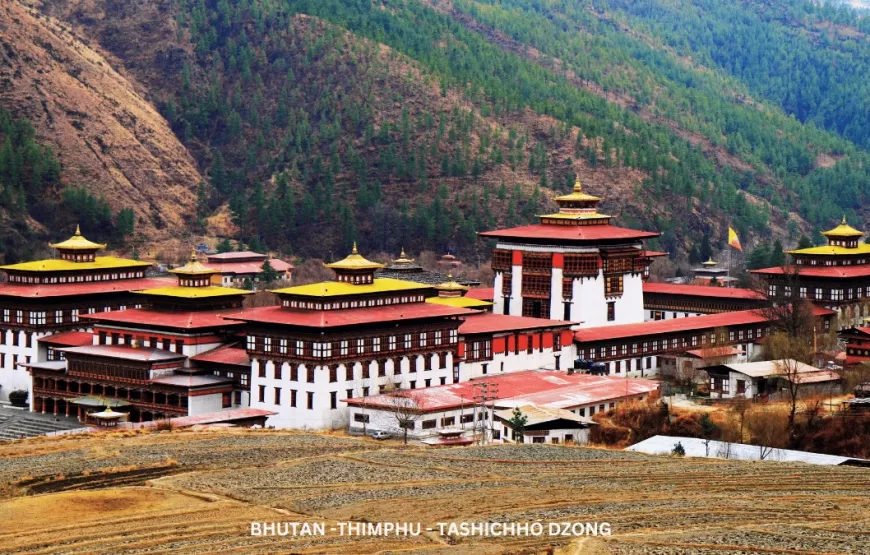
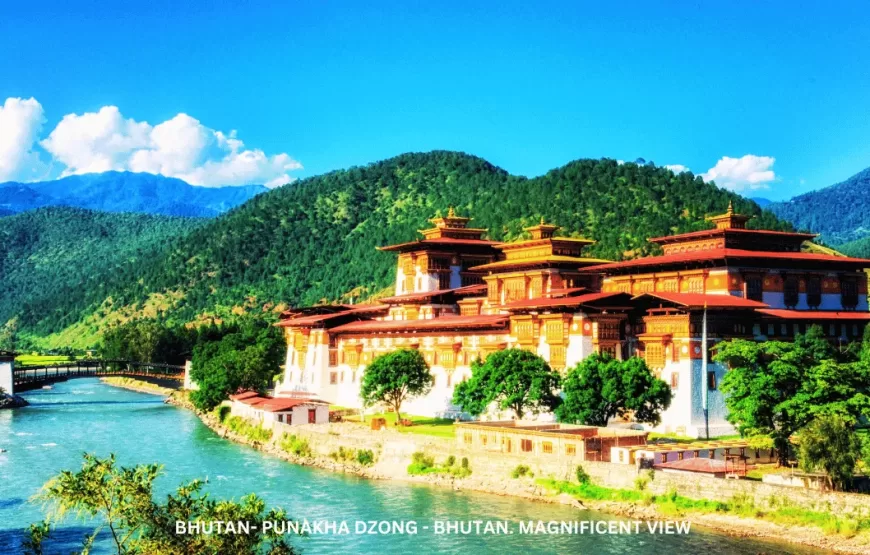
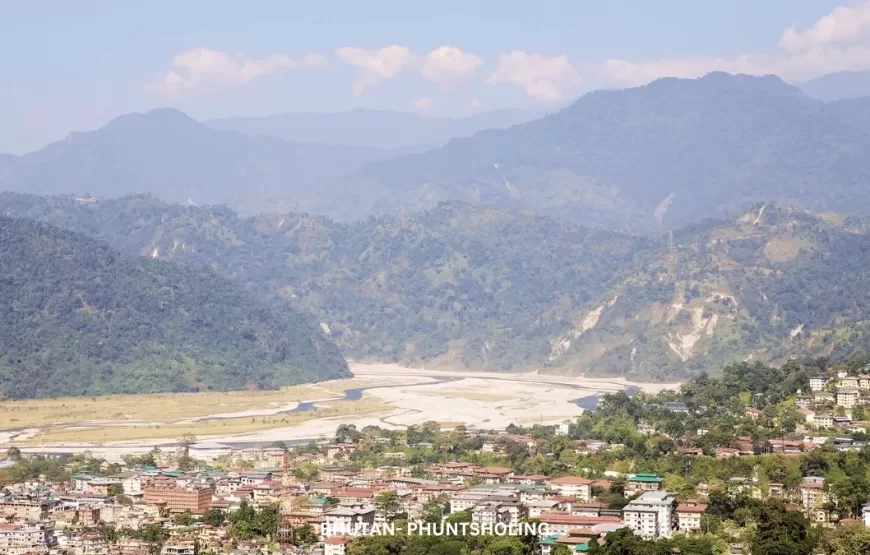
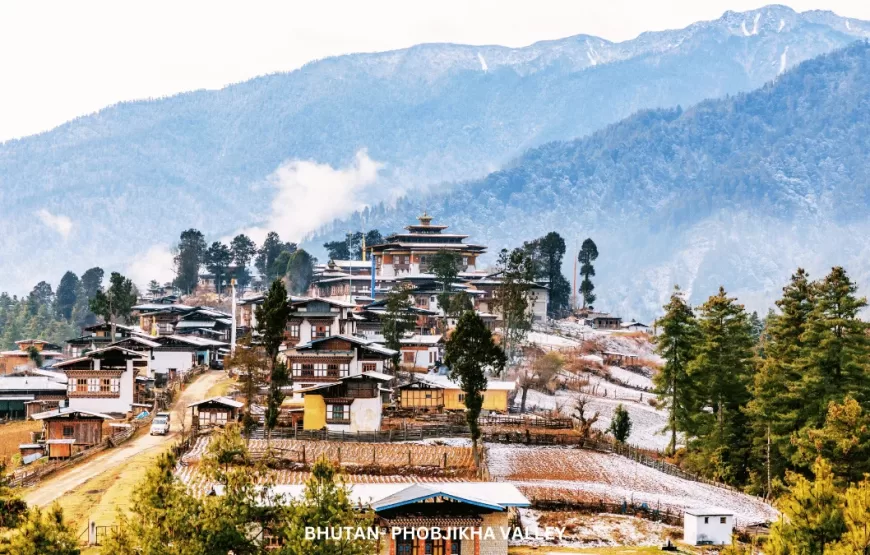
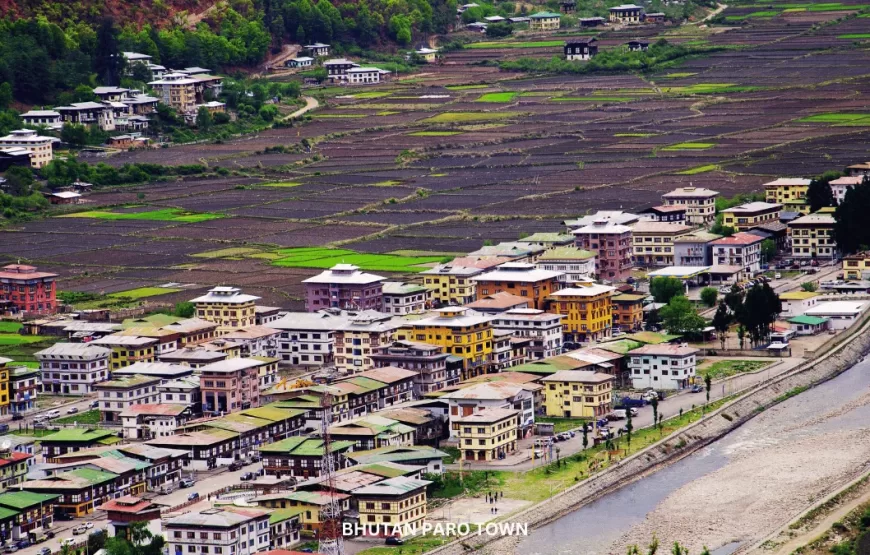
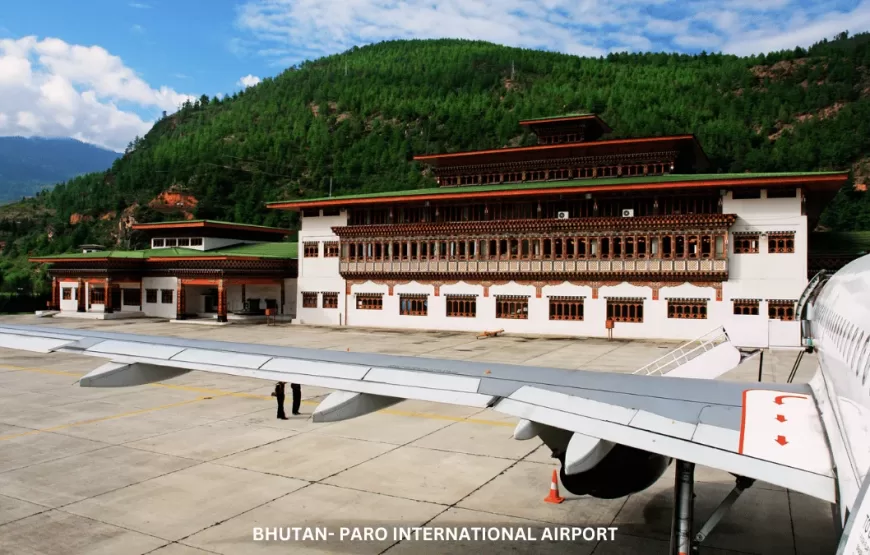
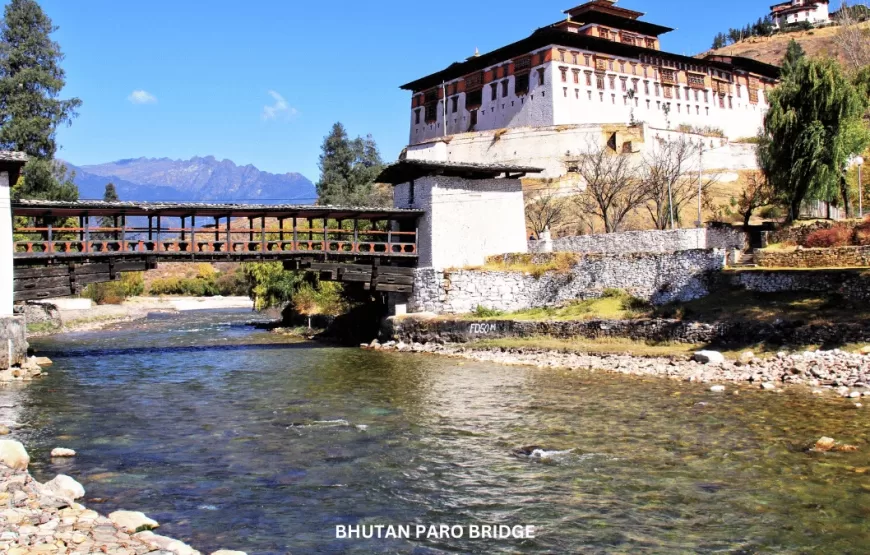
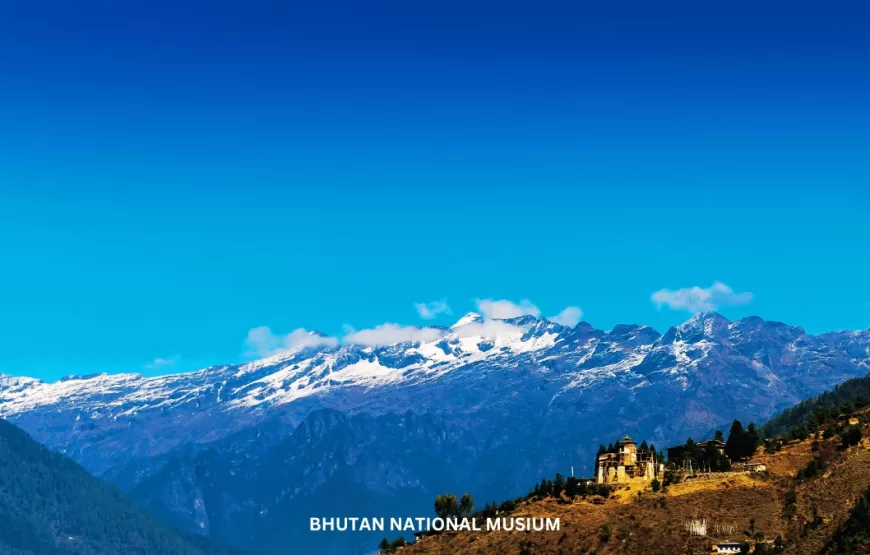
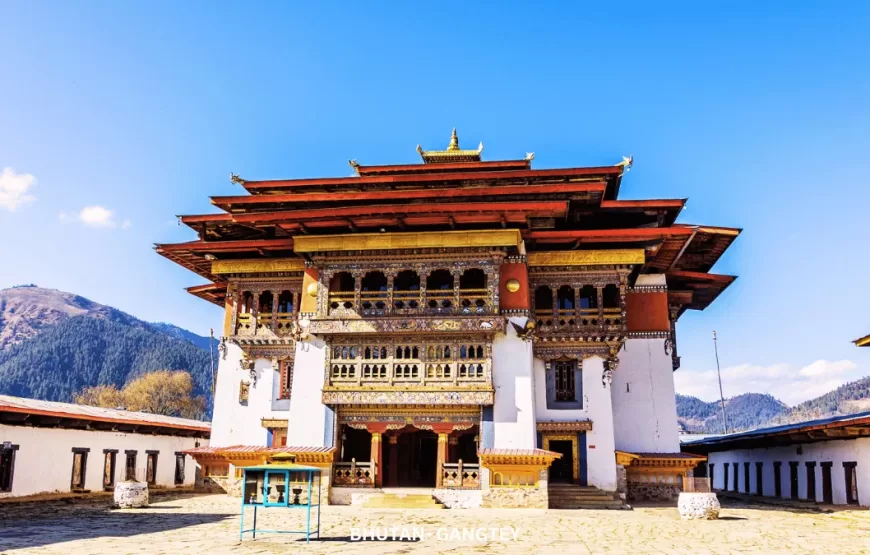
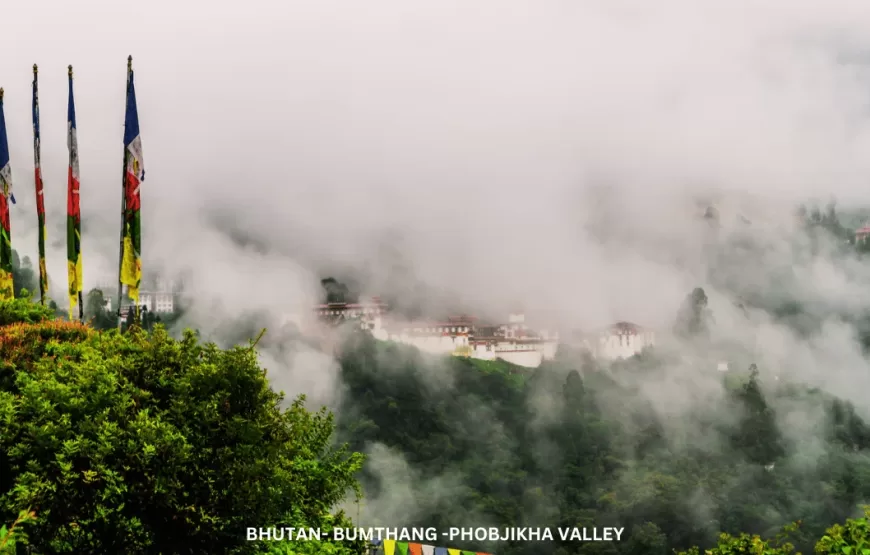
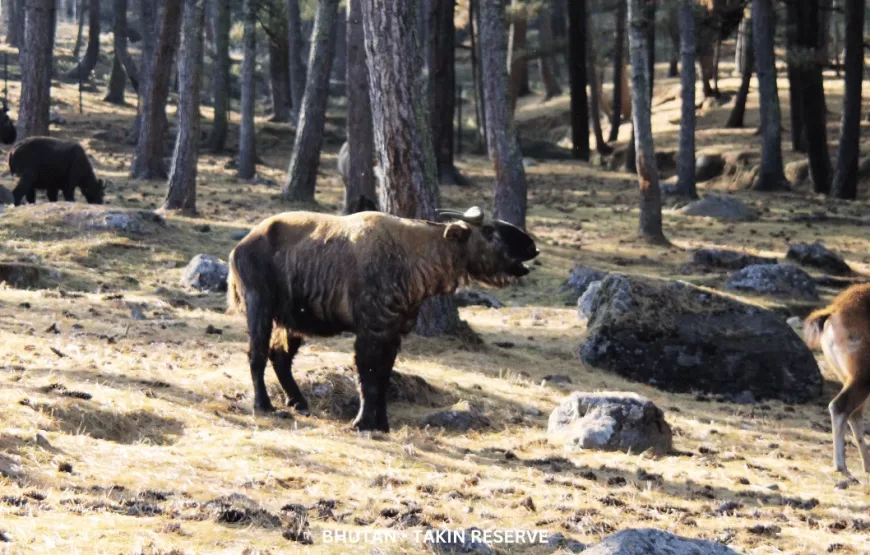
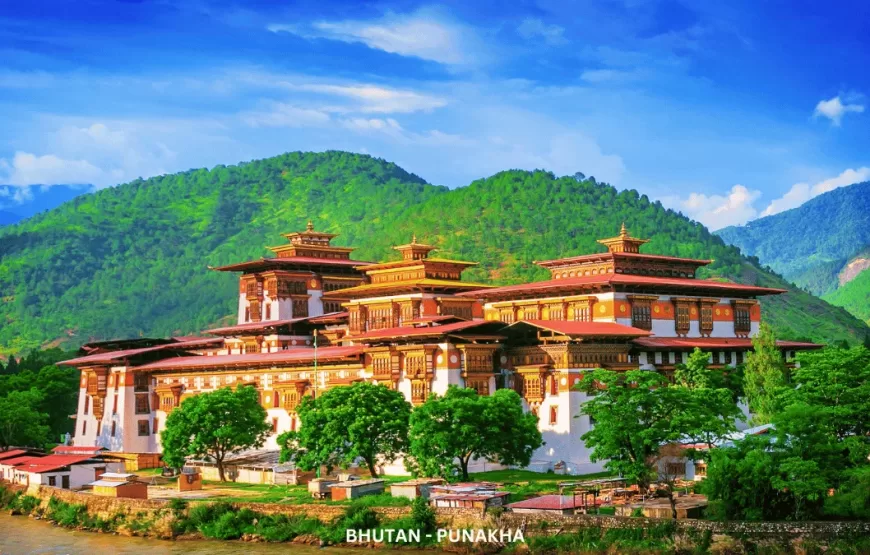
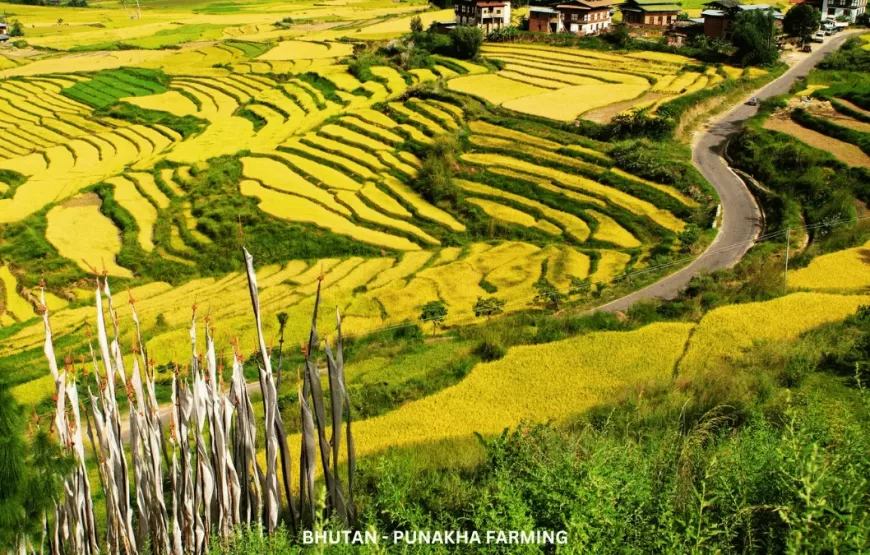
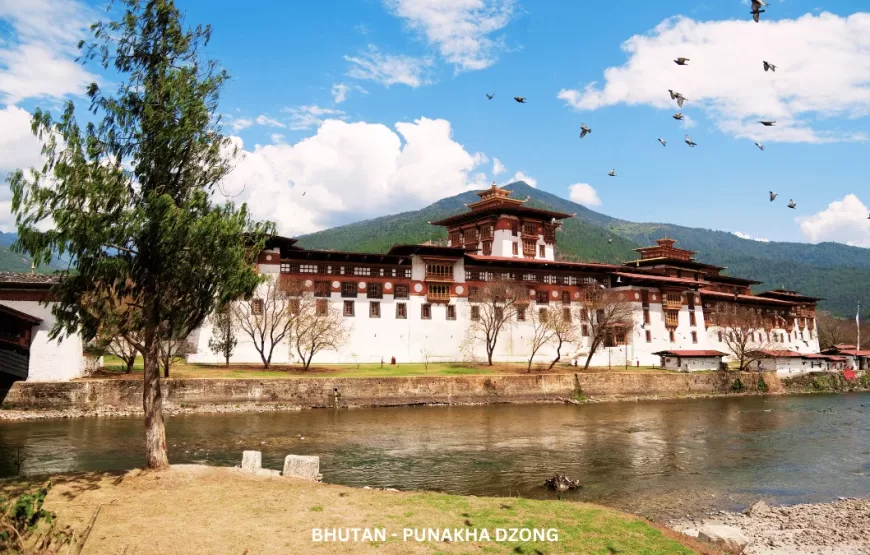
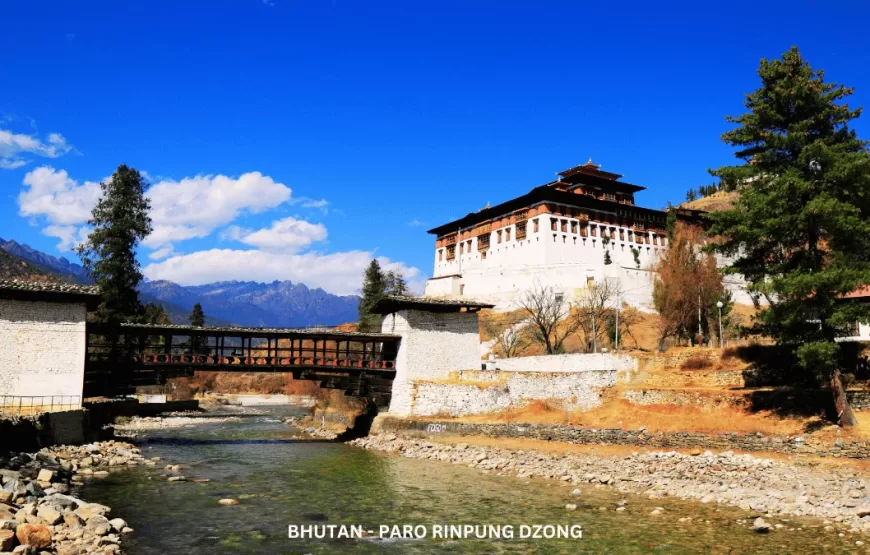
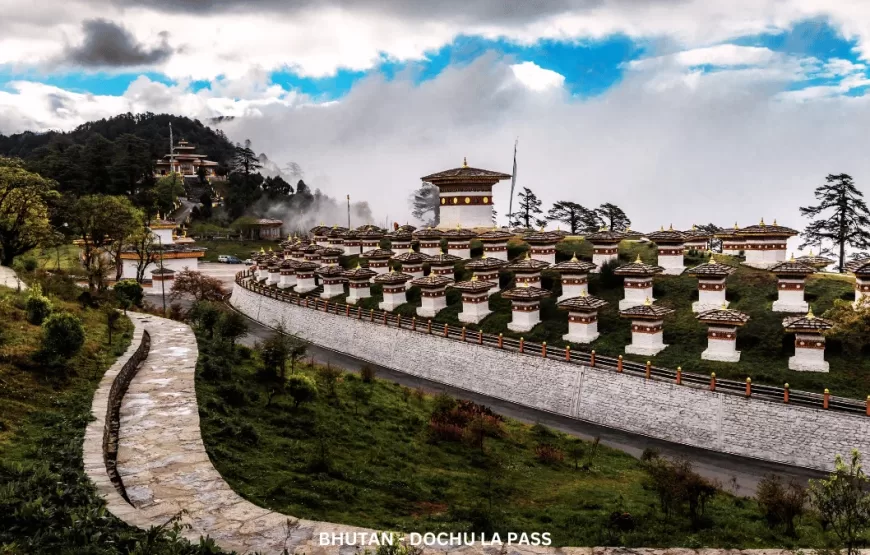
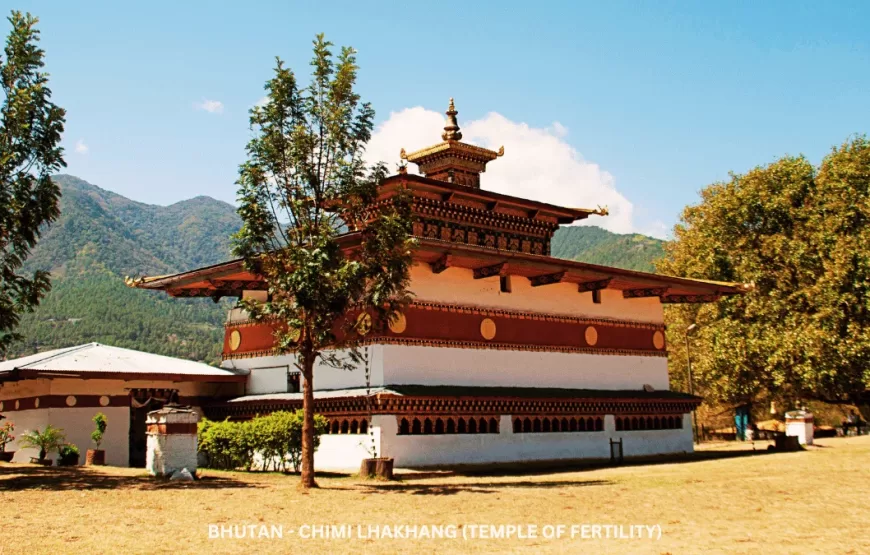
Bhutan Tour: Exploring the Land of the Thunder Dragon
Embark on an unforgettable journey to the mystical kingdom of Bhutan, a land where time seems to stand still, and the allure of tradition, culture, and breathtaking landscapes captivates your heart and soul. Your Bhutan tour promises an enriching and immersive experience like no other, as you delve into the hidden treasures of this Himalayan gem.
Destinations:
Thimphu – The Enchanting Capital: Bhutan’s capital city, Thimphu, is a blend of tradition and modernity. Explore the bustling streets adorned with colorful prayer flags, visit ancient monasteries, and witness the juxtaposition of Bhutan’s rich heritage with contemporary life. Don’t miss the majestic Tashichho Dzong, a grand fortress-monastery that serves as the seat of Bhutan’s government.
Paro – Gateway to Bhutan: Nestled in a picturesque valley, Paro is home to the country’s only international airport. Discover the iconic Paro Taktsang, or Tiger’s Nest Monastery, precariously perched on a cliffside. Explore the Paro Rinpung Dzong, an architectural masterpiece that showcases Bhutanese craftsmanship.
Punakha – Ancient Capital: Punakha, the former capital of Bhutan, boasts stunning landscapes with rice paddies, a tranquil river, and the impressive Punakha Dzong. The Dzong’s intricate design and vibrant festivals held here make it a must-visit destination.
Bumthang Valley – Spiritual Heartland: Known as the spiritual heartland of Bhutan, Bumthang Valley is dotted with sacred monasteries and temples. Visit Jakar Dzong, and explore the region’s rich religious heritage. The valley’s serene beauty and cool climate add to its allure.
Phobjikha Valley – Natural Wonder: Phobjikha Valley is a haven for nature lovers. It’s home to the rare black-necked crane and offers enchanting views of rolling hills and wetlands. Visit Gangtey Monastery and immerse yourself in the tranquility of this pristine valley.
Haa Valley – Off the Beaten Path: Haa Valley, a less-visited gem, provides an opportunity to experience Bhutan’s rural life and stunning landscapes. Discover the Haa Wangchuklo Dzong, hike to remote villages, and enjoy the scenic beauty.
Trongsa – Historic Crossroads: Trongsa holds a strategic position in Bhutan’s history, with its magnificent Trongsa Dzong perched on a ridge. Explore the dzong and the Ta Dzong, a museum showcasing Bhutan’s history and culture.
Eastern Bhutan – The Wild and Remote: The eastern region offers an off-the-beaten-path adventure with lush forests, dramatic cliffs, and pristine rivers. Explore towns like Trashigang and experience Bhutan’s eastern charm.
Western Bhutan – Cultural Mecca: Western Bhutan is a cultural hub with vibrant towns like Wangdue Phodrang and Haa. Visit the temples, monasteries, and local markets that offer insights into Bhutan’s way of life.
Central Bhutan – Land of Festivals: Central Bhutan, including places like Wangdue Phodrang and Trongsa, is known for its colorful festivals that celebrate Bhutanese culture and spirituality. Attend one of these festivals to witness the country’s vibrant traditions.
As you journey through these enchanting destinations, you’ll be welcomed by warm Bhutanese hospitality, mesmerizing landscapes, and a deep sense of spirituality that permeates every corner of the kingdom. A Bhutan tour is not just a vacation; it’s a transformative experience that will leave you with lasting memories and a profound appreciation for this extraordinary kingdom.
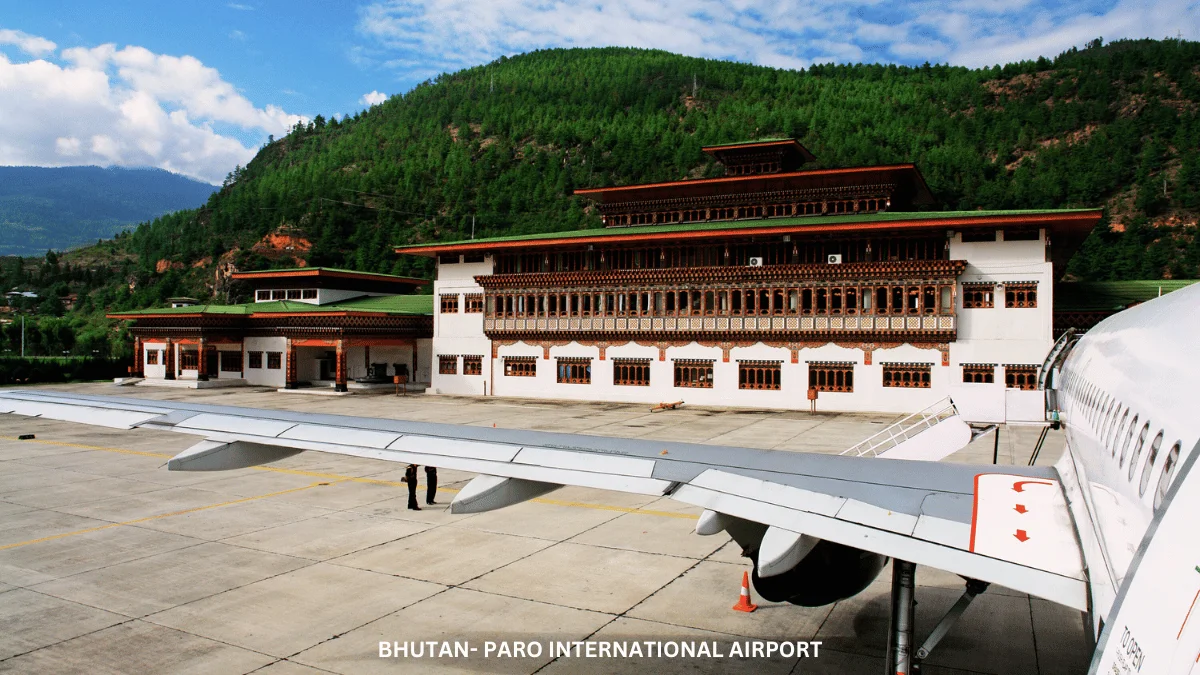
Arrive at Paro International Airport from Delhi or Calcutta. Paro is situated in a beautiful valley at 2280 metres and is a fitting introduction to this charming kingdom. Your guide will meet you and take you on a short one-hour drive along the Paro and Thimphu river valleys to Thimphu, Bhutan’s capital, at 2320 metres. Take a late afternoon walk around town and soak in the atmosphere of this magical capital with its busy shops and bazaars and photogenic citizens in national dress. Later, visit Tashichho Dzong, built in 1641, which housed the original National Assembly and is now home to Government offices, the throne room and offices of the King. Overnight in Thimphu You can also visit the Takin Reserve showcasing the unique national animal, the Takin. You may browse the striking collection of intricate textiles at the National Textile Museum or the weekly market. In the afternoon, you can visit the huge statue of Buddha Dordenma, which commands a tremendous view of Thimphu valley. Then hike from Kuensel Phodrang nature park to Changangkha Temple. A hike of around one hour or so through beautiful blue pine and rhododendron forest, which also gives a fantastic view of Thimphu valley. You can also like to visit the newly opened postal museum, detailing the history of Bhutan’s postal system and showcasing Bhutan’s rich assortment of interesting stamps. If you would like to view or buy Bhutanese handicrafts you may like to visit the new market opposite Taj Tashi hotel which has an array of stalls run by local handicraft shops selling purely homemade articles with no imports. Overnight in Thimphu
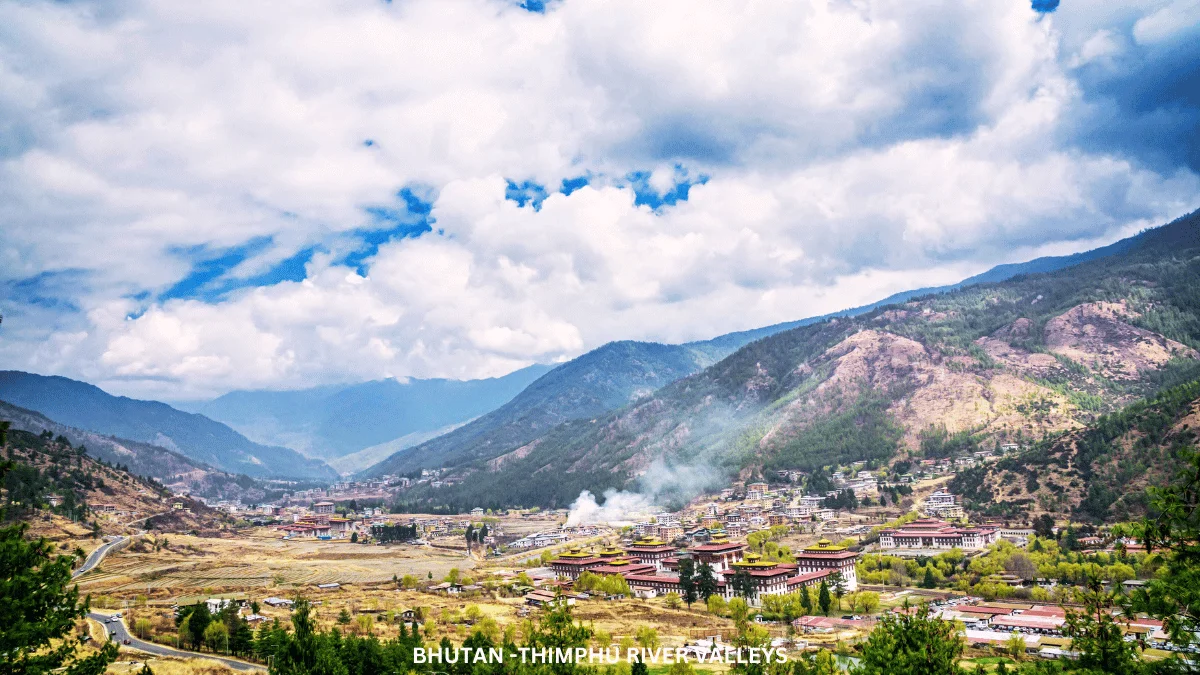
Thimphu sightseeing. Start your day by visiting Thangthong Dewachen Nunnery, popularly known as Zilukha Nunnery. You can sit with the Nuns and join them during their prayers. [If you wish, you could offer tea and snacks to the nuns – with some donations]. Then you can visit the School of Traditional Arts to watch students at work and to get an introduction to the 13 traditional arts, including painting, embroidery, woodcarving, mask-making and statue-making. Then we will visit the imposing Punakha Dzong, “Palace of Great Happiness”. Built in 1637, it is strategically placed at the confluence of two rivers, the Po Chu and the Mo Chu. Overnight in Punakha
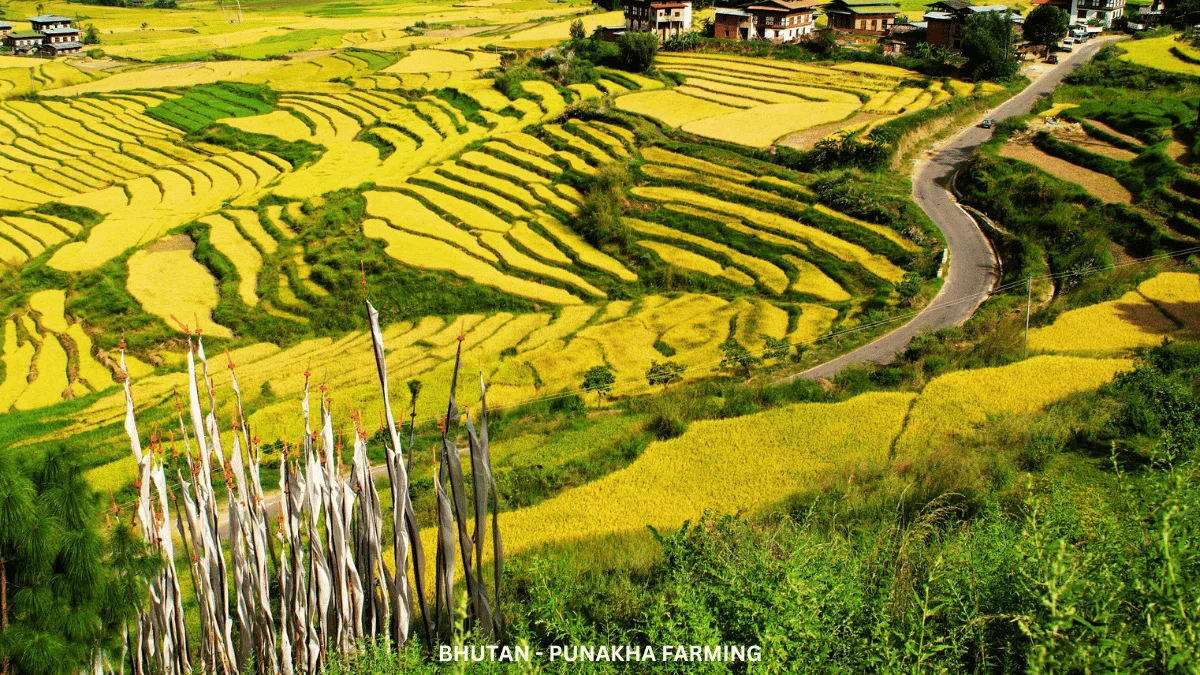
Thimphu to Punakha. In the morning drive approximately 3 hours to the old capital, Punakha, via Dochu La pass at 3050 metres, where we will stop for a hot drink and enjoy spectacular panoramic views of the Eastern Himalaya ranges. You will notice the change of climate and vegetation as we approach low-lying Punakha at 1250 metres. Take a pleasant walk for an hour or so across the terraced fields of Sopsokha village to Chimi Lhakhang (Temple of Fertility) built in the 15th century by the ‘Divine Madman’ (Lama Drukpa Kuenley). Here, you can visit a Farmhouse for lunch or tea, to taste the red rice and local cuisine to experience the traditional Bhutanese way of life. You can also witness farmers working in the fields for the cultivation of paddy or the vegetables. You can visit the farmlands and try your hands on the farming. able to see a demonstration of traditional wood turning skills by local artisans who make traditional wooden bowls and cups – and you can try your hand as well if you wish. Overnight in Paro
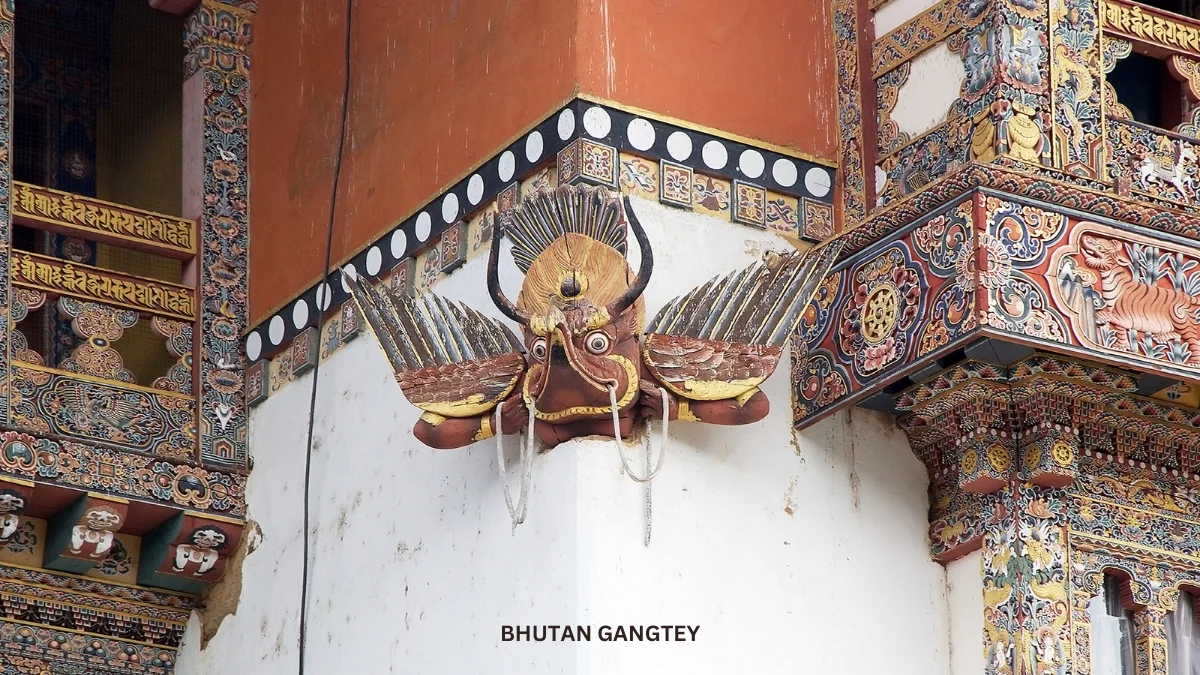
Drive approximately 3 hours to Gangtey at 2900 metres. Enjoy the views of the immense and remote Phobjikha valley and the black mountain ranges. Visit Gangtey Gompa (one of Bhutan’s oldest monasteries and recently extensively renovated) and explore the valley where the villagers continue to live a traditional Bhutanese rural lifestyle. This is the site where black-necked cranes visit in their hundreds in November each year after spending the summer in Tibet. Late afternoon drive back to Punakha and relax in the hotel. Overnight in Punakha
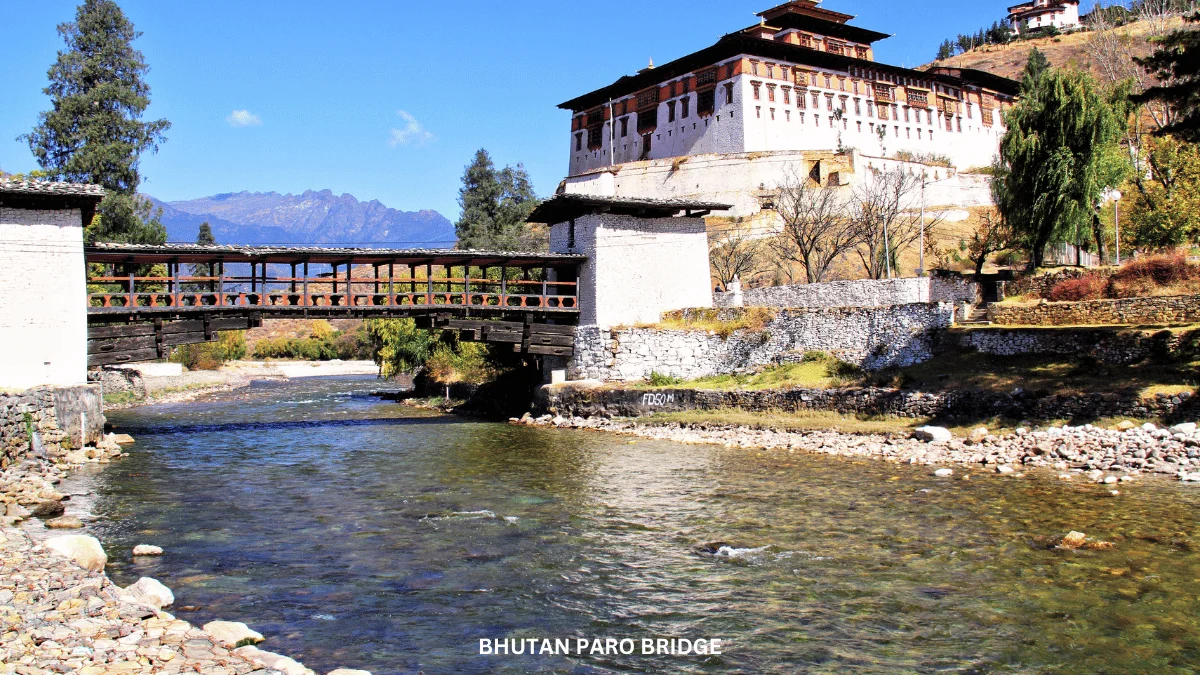
Today we return to Paro, a drive of approximately 4 hours. In the afternoon you can start your culture tour of Paro valley by visiting the impressive Paro Rinpung Dzong, one of the finest examples of Bhutanese architecture. You can also visit the National Museum. This was previously housed in the Ta Dzong (watch tower) built on top of the hill above Rinpung Dzong to defend Rinpung Dzong and the Paro valley during times of war, in an unusual circular construction resembling a conch shell. Unfortunately, an earthquake in September 2011 damaged the Ta Dzong and the contents of the museum were moved to a neighbouring building. You can still see a magnificent collection of Bhutanese artefacts – costumes, religious paintings, arms, textiles and a fascinating collection of Bhutan stamps. Near to the museum you may also be able to see a demonstration of traditional wood turning skills by local artisans who make traditional wooden bowls and cups – and you can try your hand as well if you wish. Overnight in Paro
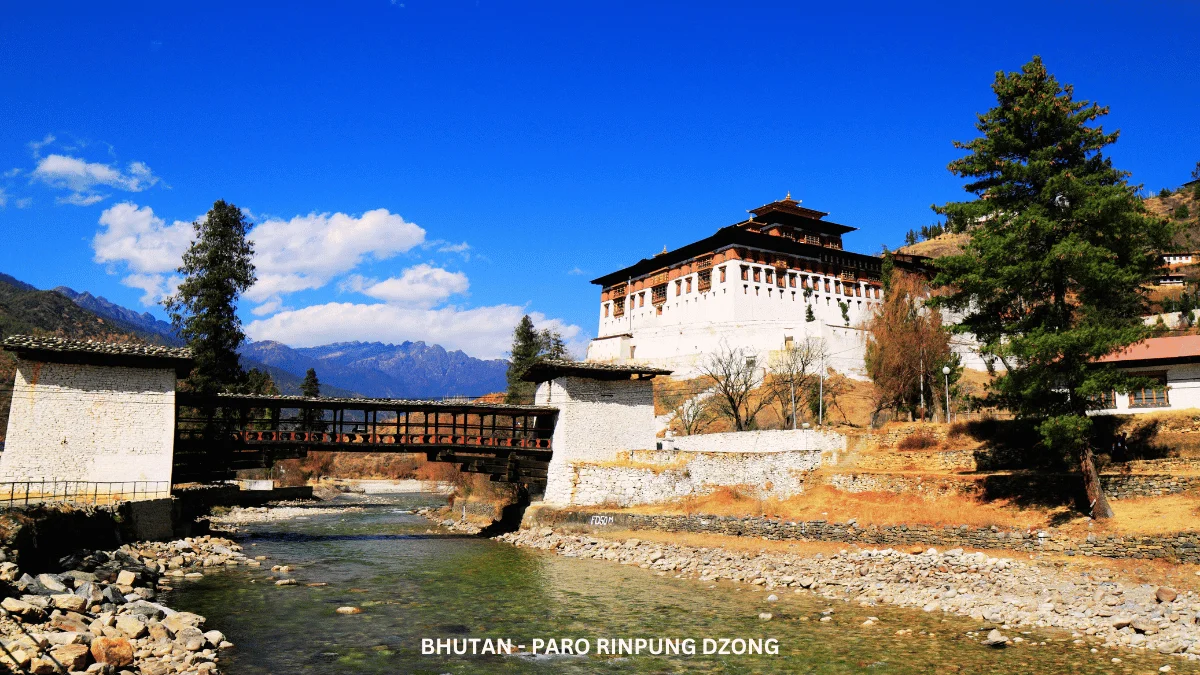
Take a day walk to the ‘Tiger's Nest’, the sacred Taktshang monastery which clings to the rock face 900 metres above the valley floor. Guru Rinpoche is said to have flown to the site riding on a tigress. He subsequently meditated here for three months. It is one of Bhutan’s most holy sites and draws pilgrims not only from Bhutan but also from neighbouring Buddhist countries. You can have lunch at the Taktshang cafeteria from where you get a spectacular view of the monastery. Late afternoon, visit a local farmhouse and take the opportunity to try the restorative properties of a hot stone bath to feel relaxed after the hike. If you prefer your creature comforts, you can take tea or dinner with the family and then return to your hotel. Overnight in Paro

Early in the morning your guide will accompany you to the airport to see you off onto your flight and wish you Tashi Delek
Do I need a visa to visit Bhutan?
Yes, all foreign tourists visiting Bhutan require a visa. However, you cannot apply for a Bhutanese visa independently. You must book your trip through an authorized Bhutanese tour operator, who will arrange the visa for you.
What is the minimum daily spending requirement for tourists in Bhutan?
Bhutan has a minimum daily spending requirement for tourists to help sustain its unique culture and environment. The daily tariff varies depending on the season but typically includes accommodation, meals, a licensed guide, and transportation within Bhutan.
When is the best time to visit Bhutan?
The best time to visit Bhutan is during the spring (March to May) and autumn (September to November) when the weather is pleasant, and the landscapes are at their most vibrant. However, each season offers its own unique experiences.
How do I get to Bhutan?
You can fly to Bhutan through Paro International Airport, which is the only international airport in the country. Druk Air (the national airline) and Bhutan Airlines operate flights to Paro from several Asian cities, including Delhi, Kathmandu, Bangkok, and Singapore.
What should I pack for a trip to Bhutan?
Pack clothing suitable for the season of your visit, including layers for cooler evenings. Don't forget comfortable walking shoes for hikes and visits to monasteries. Sunscreen, insect repellent, and a good camera are also recommended.
Is it safe to drink the water in Bhutan?
It's advisable to drink bottled water in Bhutan to avoid any potential stomach discomfort from tap water. Your tour operator or hotel will typically provide bottled water.
Is there internet and mobile phone coverage in Bhutan?
Bhutan has a mobile phone network and limited internet access. However, in some remote areas, the network coverage may be unreliable or non-existent.
Can I use credit cards in Bhutan?
Credit cards are not widely accepted in Bhutan, especially in smaller towns and villages. It's a good idea to carry cash (Bhutanese Ngultrum or US Dollars) for most transactions.
What is the official language of Bhutan?
The official language of Bhutan is Dzongkha. However, English is widely spoken, especially in the tourism industry.
Are there any cultural or dress code requirements for tourists in Bhutan?
Yes, tourists are expected to dress modestly when visiting religious sites and government buildings. Wearing revealing clothing is not appropriate. It's also customary to remove your shoes before entering temples and monasteries.
Can I trek or hike in Bhutan?
Bhutan offers excellent trekking opportunities, and there are treks for all skill levels. Popular treks include the Druk Path Trek, Jomolhari Trek, and Snowman Trek. You should plan your trek with a licensed guide.
Is Bhutan a safe country for tourists?
Bhutan is generally considered a safe destination for tourists. The crime rate is low, and Bhutanese people are known for their hospitality. However, like any destination, it's essential to exercise common-sense precautions and respect local customs.
Can I travel independently in Bhutan?
No, Bhutan does not permit independent travel for tourists. You must book your trip through a licensed Bhutanese tour operator, who will arrange your itinerary, accommodation, and necessary permits.
What is the currency of Bhutan, and can I exchange money easily?
The currency of Bhutan is the Bhutanese Ngultrum (BTN), but Indian Rupees (INR) are also widely accepted. You can exchange money at banks or authorized exchange counters, and major hotels and shops also accept credit cards.
What are the customs regulations for bringing souvenirs from Bhutan?
Be aware of Bhutanese customs regulations when purchasing souvenirs like textiles, antiques, or handicrafts. Some items may require special permits for export.
It's crucial to stay informed about the latest travel requirements and regulations before planning your trip to Bhutan, as they may change over time. Always consult with your tour operator for the most up-to-date information and assistance with your travel arrangements.